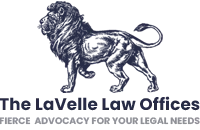Evictions and Back Rent for Your Home, Apartment or Commercial Space
Filing Bankruptcy may be able to help you eliminate back rent owed. Under bankruptcy law, back rent owed is included in your bankruptcy case and may very likely be discharged. When a debt is discharged in bankruptcy, the person no longer owes that debt. It is importnat to note that, while bankruptcy can discharge past rent due, once your bankruptcy case is filed you must then stay current on your rent. There are many advantages to filing bankruptcy when you have fallen behind on rent, however, there may also be alternatives to bankruptcy in legislation enacted to help people who have experienced financial stress due to COVID.
The COVID-19 Tenant Relief Act (SB91, 2020 Budget Act) that was signed into law January 29, 2021 extended the eviction moratorium in California put in place by the Tenant Homeowner, and Small Landlord Relief and Stabilization Act of 2020 (AB 3088) to June 30, 2021. The rules and requirements for the program include:
Qualifying tenants experiencing a covid-19 hardship will not be evicted for nonpayment of rent under the terms below…
- Available to any tenant who provides a declaration of covid-19-related circumstances within 15 days of being served with a notice to quit based on nonpayment of rent. A declaration form can be found here: https://housing.ca.gov/tenant/forms.html
- By June 30, 2021, tenants are required to pay 25% of the total amount of rent due between September 1, 2020 and June 30, 2021.
- If the tenant pays at least the 25% of rent owed during that timeframe, he/she is permanently protected from eviction for not paying the full rent during that time period; however, the tenant will still owe the landlord all unpaid rent.
- Rent relief is available for households with incomes at or below 80% of Area Median Income, with a priority on helping those households at or below 50% of Area Median Income, as well as households with at least one person unemployed for the preceding 90 days at the time of application.
- These funds prioritize the payment of rental arrearages.
- Landlords can choose to accept 80% of any unpaid rent owed from April 1, 2020 through March 31, 2021. If a landlord accepts this payment, the landlord agrees to forgive the remaining unpaid rent for that covered period. This does not excuse the tenant’s obligation to pay 25% of the rent due between September 1, 2020 and June 30, 2021.as noted above.
- If a landlord chooses not to participate in the program, the tenant can still apply for relief valued at 25% of unpaid back rent they owe for the covered period.
- Qualified tenants will also be able to access funds to cover 25% of prospective rent for the months of April, May, June of 2021, subject to funding availability.
- Utility arrearages will also be eligible to be paid, subject to funding availability.
- Program began accepting applications on March 15, 2021.
To find out if you are eligible for the state program and/or a local program, check here: https://www.arcgis.com/apps/instant/lookup/index.html?appid=f32435102af34d24a7420ffc432a33a6
Additional information can be found here: https://housing.ca.gov
Commercial Tenants
Evictions:
CA Governor Gavin Newsom extended the eviction moratorium relating to commercial eviction by issuing Executive Order N-80-20 and Executive Order N-03-21. It allows local jurisdictions to extend protections for commercial tenants through June 30, 2021. Thus, local commercial protections will vary. Check your county and city government websites for local ordinances.
On this page you can find a chart last updated May 5, 2021, with local ordinances listed: https://www.nolo.com/legal-encyclopedia/coronavirus-covid-19-california-eviction-bans-and-tenant-protections.html



